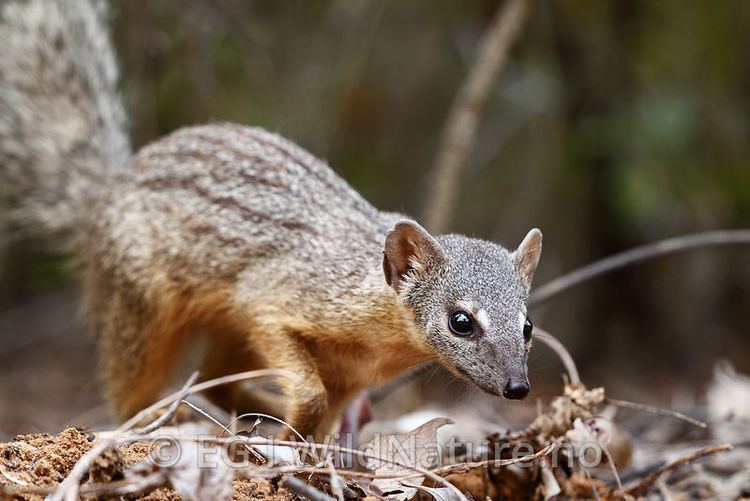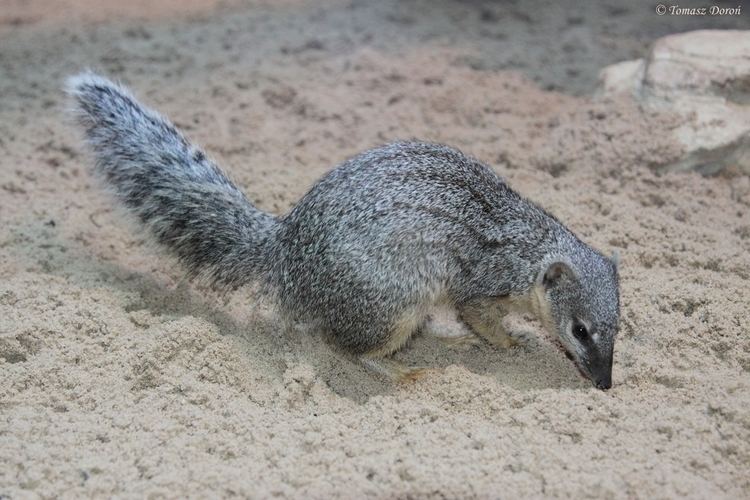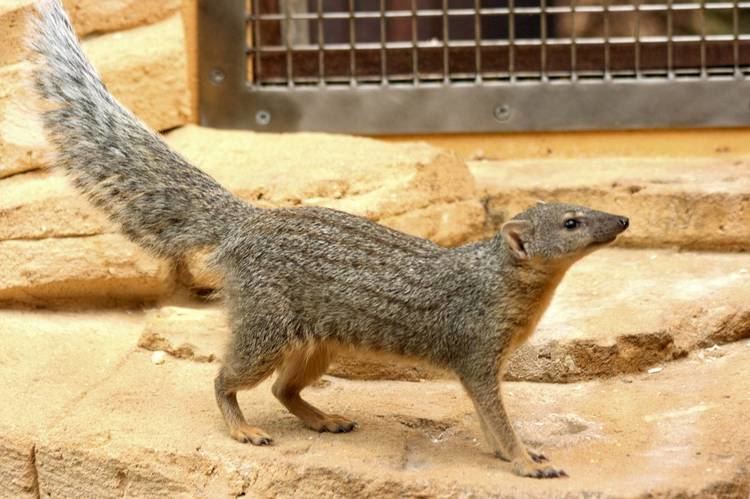Subfamily Galidiinae Phylum Chordata Rank Species | Scientific name Mungotictis decemlineata Higher classification Mungotictis Order Carnivores | |
 | ||
Genus MungotictisPocock, 1915 Similar Brown‑tailed mongoose, Grandidier's mongoose, Ring‑tailed mongoose, Salanoia, Broad‑striped Malagasy mongoose | ||
Narrow striped mongoose
The narrow-striped mongoose (Mungotictis decemlineata) is a member of the family Eupleridae, subfamily Galidiinae and endemic to Madagascar. It inhabits the dry deciduous forests of western and southwestern Madagascar, where it lives from sea level to about 125 m (410 ft) between the Tsiribihina and Mangoky rivers. In Malagasy it is called boky-boky (pronounced "Boo-ky Boo-ky").
Contents
- Narrow striped mongoose
- Narrow striped mongoose mungotictis decemlineata females rscc
- Ecology and behavior
- Conservation status
- References

Narrow striped mongoose mungotictis decemlineata females rscc
Ecology and behavior

The narrow-striped mongoose is diurnal and lives in matriarchal family groups that practice cooperative rearing of young. Usually, the young of the alpha female will get the most care, and often the lower ranking females' young is neglected to the point of abandonment. The narrow-striped mongoose creates small nests in trees and brush, and has been known to share trees with Lepilemur species, with which it apparently has little or no interaction. Results of a few studies suggest that the narrow-striped mongoose is primarily insectivorous, but eats also bird eggs and a variety of small animals including rodents, birds, snakes, and even small lemur species such as the gray mouse lemur.
Conservation status

The narrow-striped mongoose is currently classified as endangered by IUCN because it occurs in a severely fragmented area and is threatened by habitat loss due to logging and conversion to agriculturally used land. The western dry forests are both highly fragmented and under higher human pressure than the eastern rain forests. The main cause of decimation of dry deciduous forest in Madagascar is slash-and-burn agriculture by subsistence farmers, but other causes include logging for wild honey and lumber.


